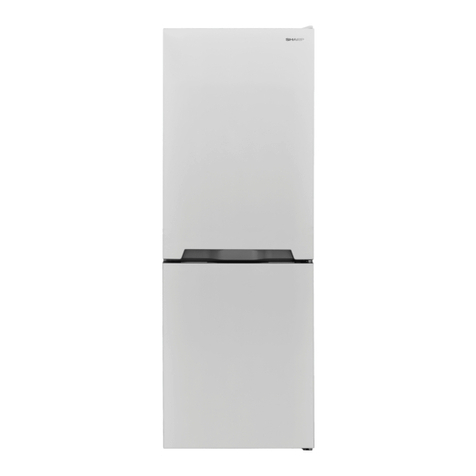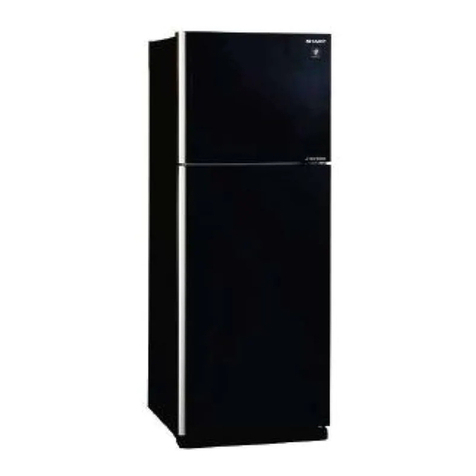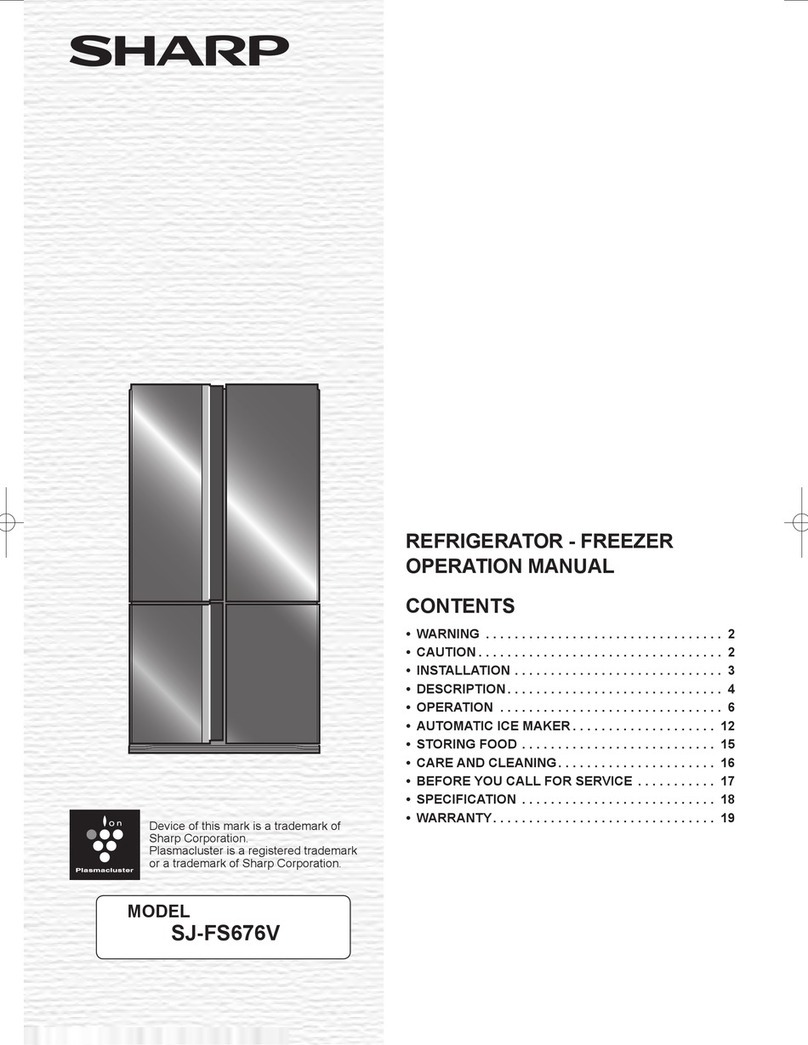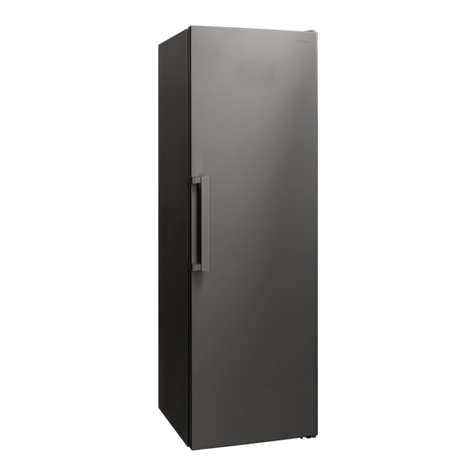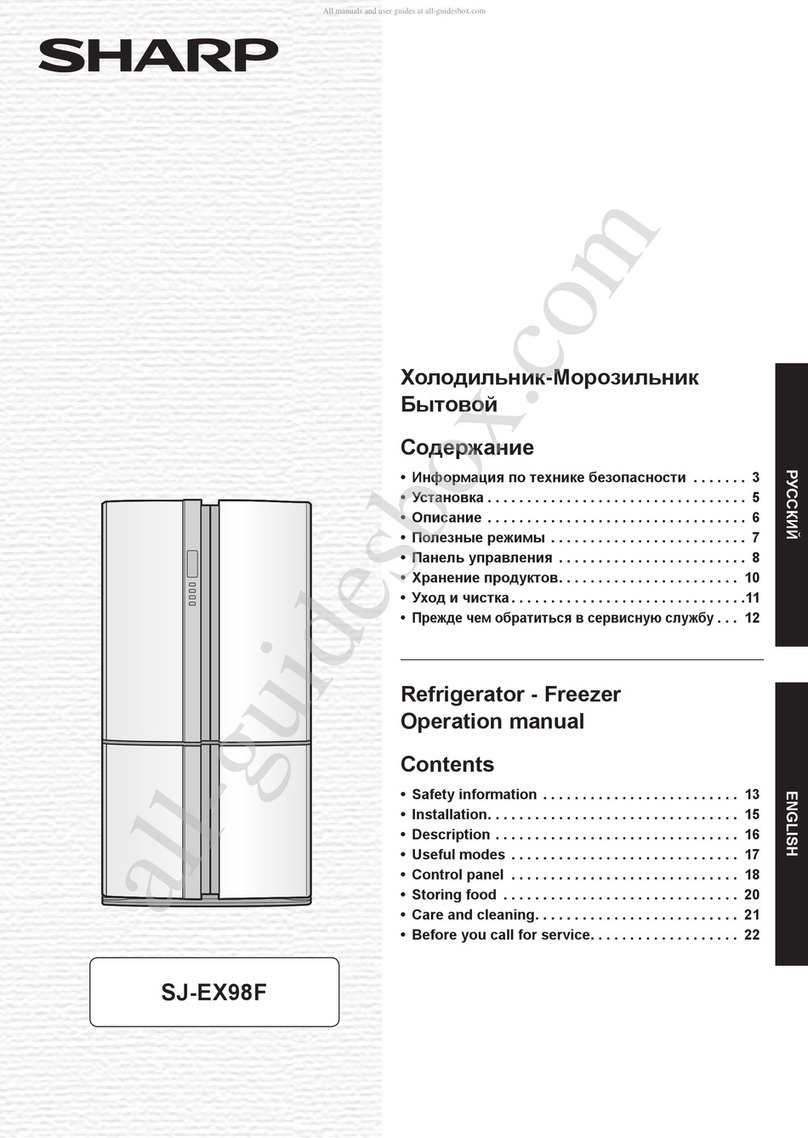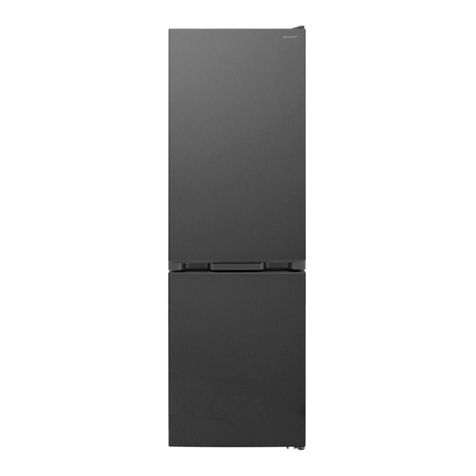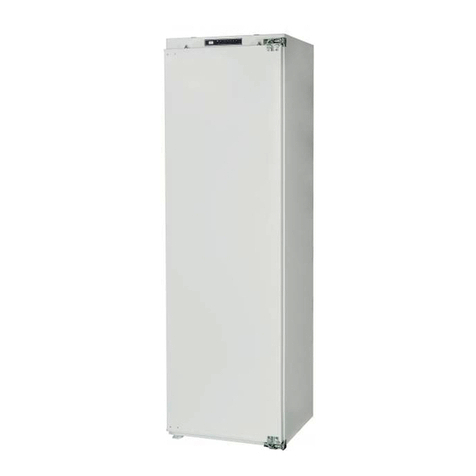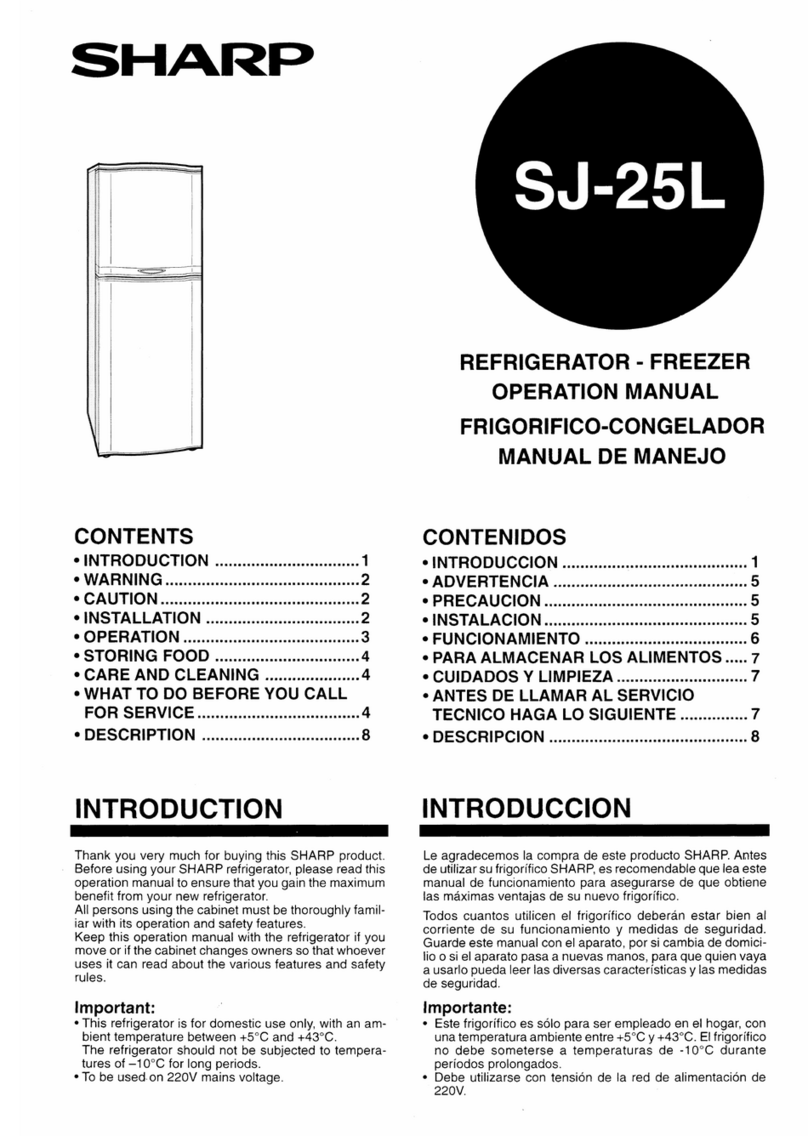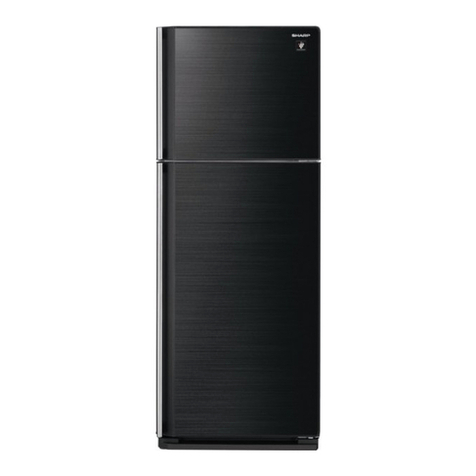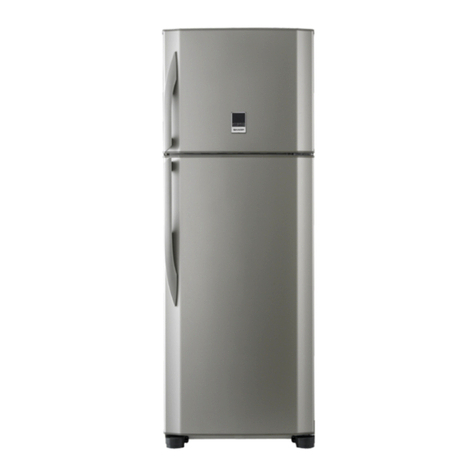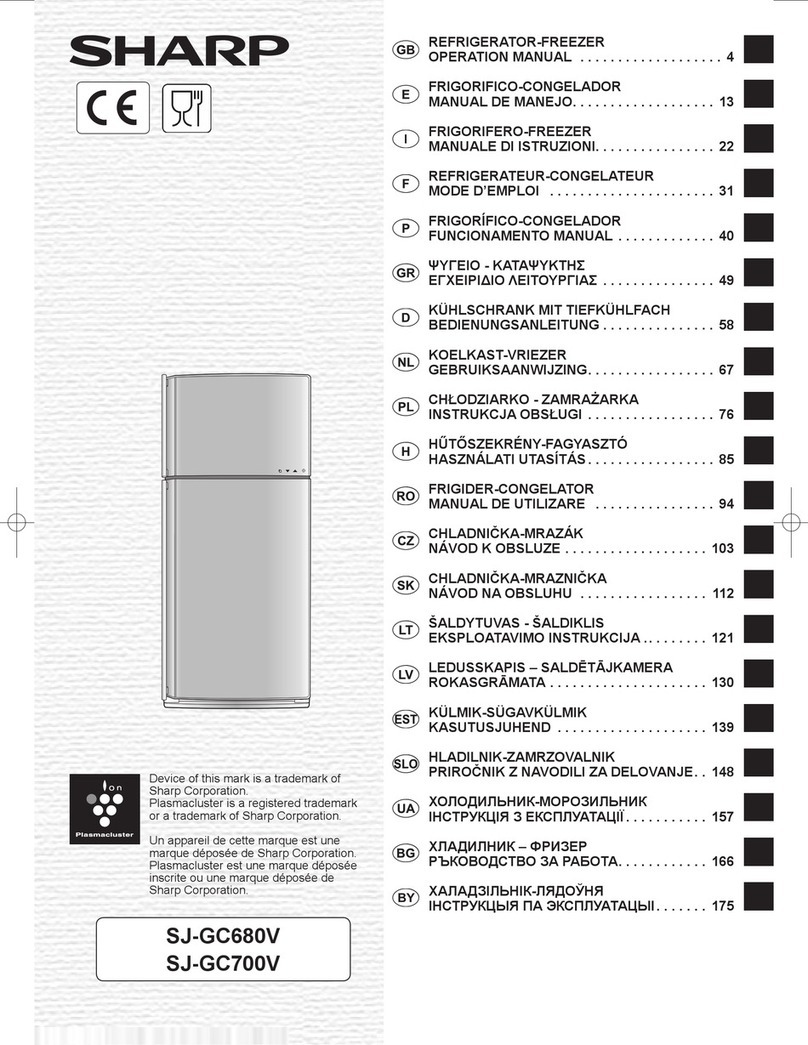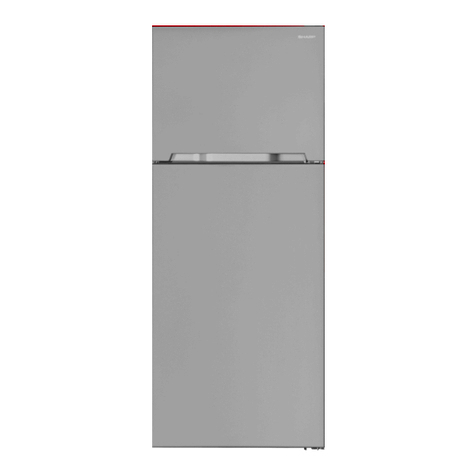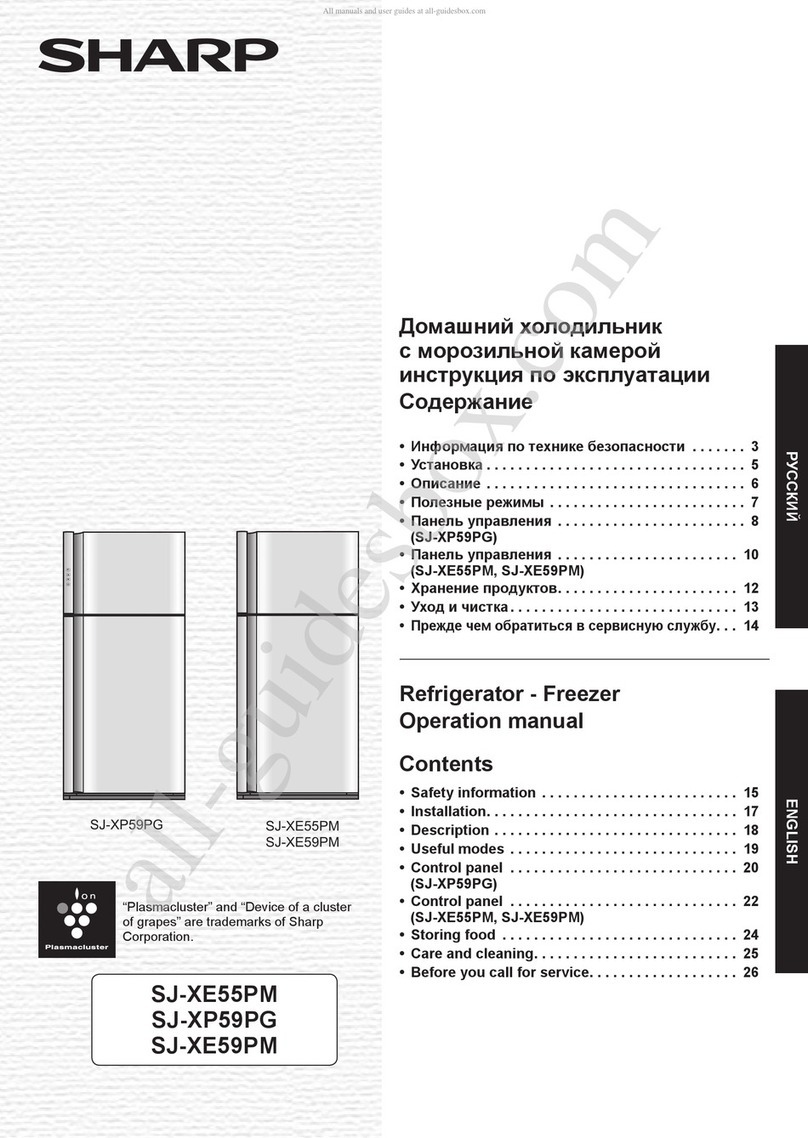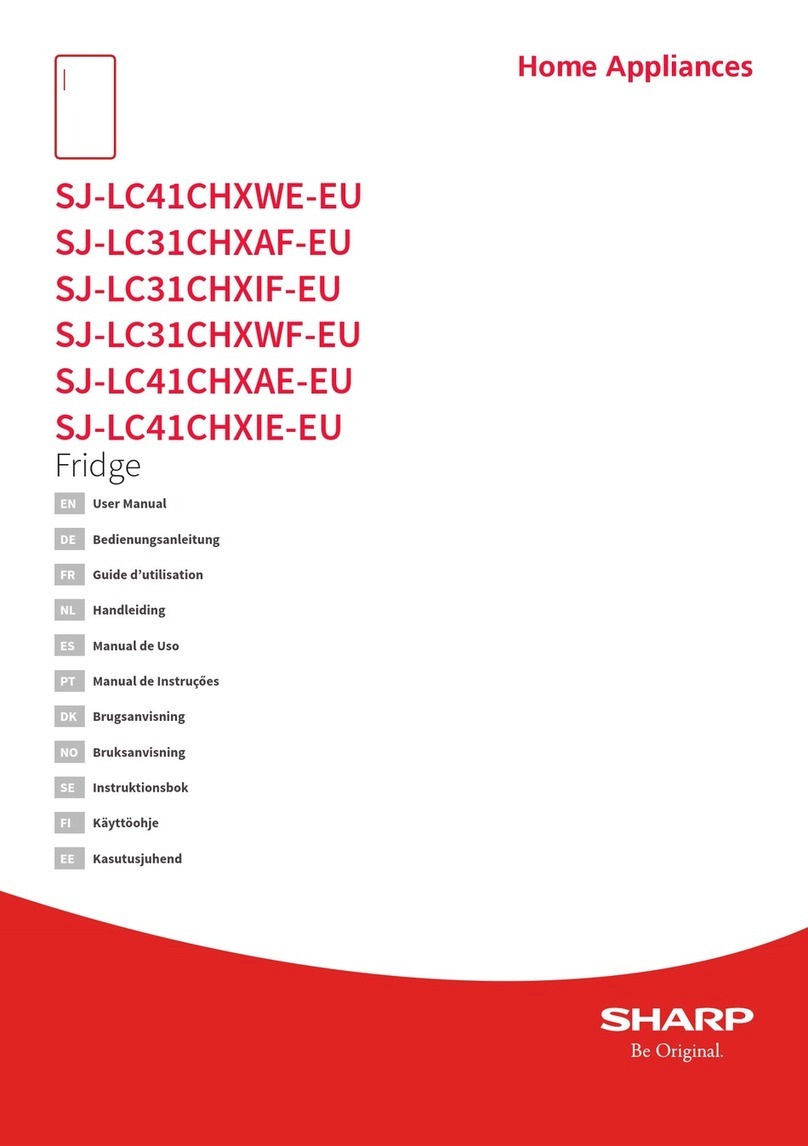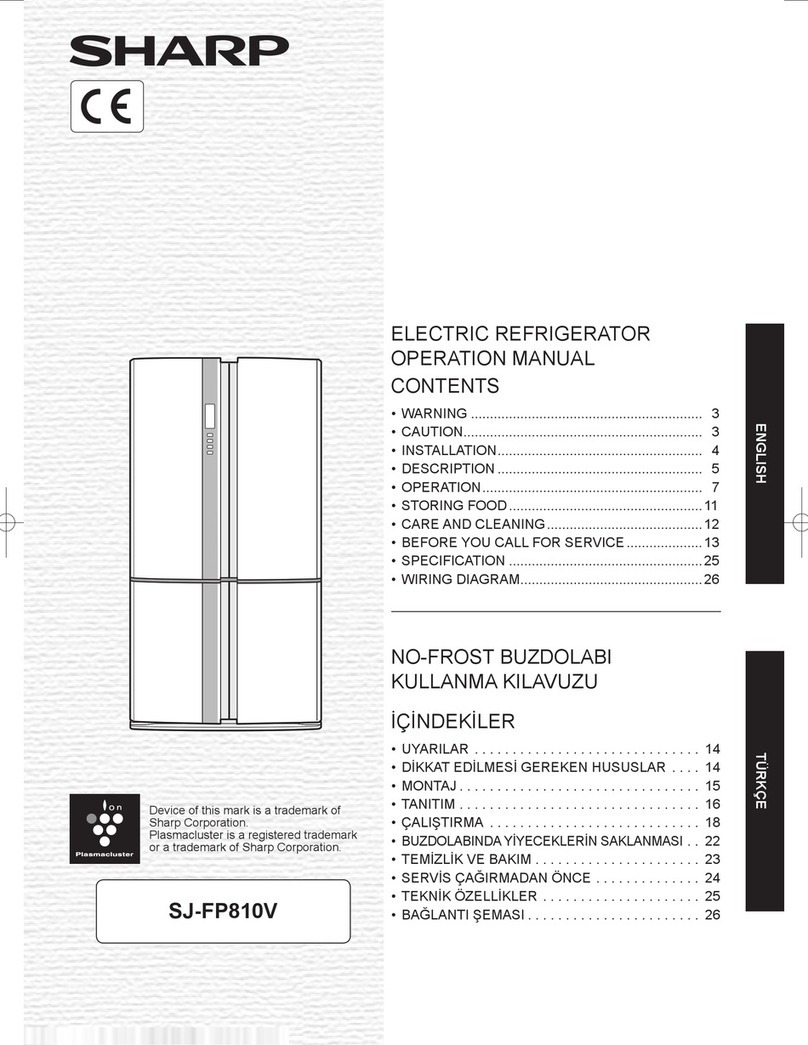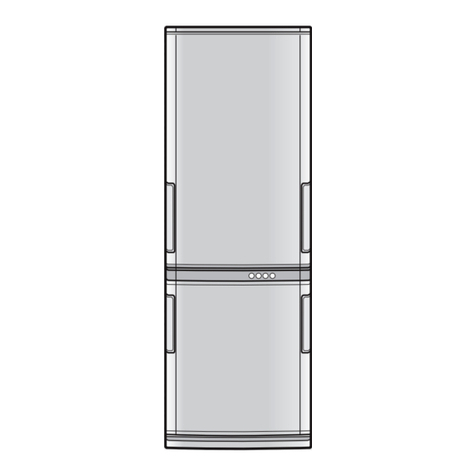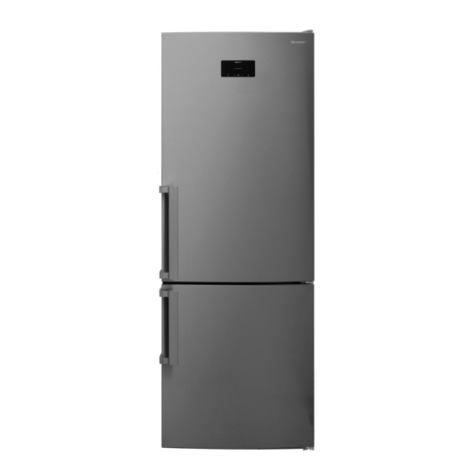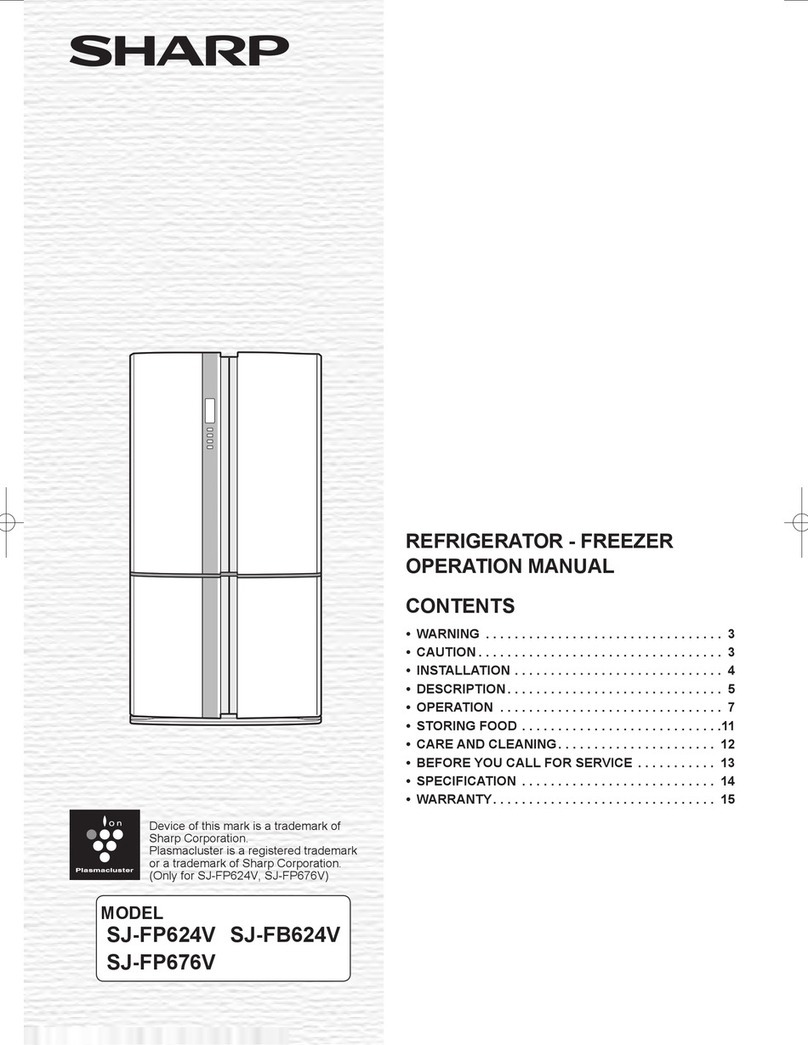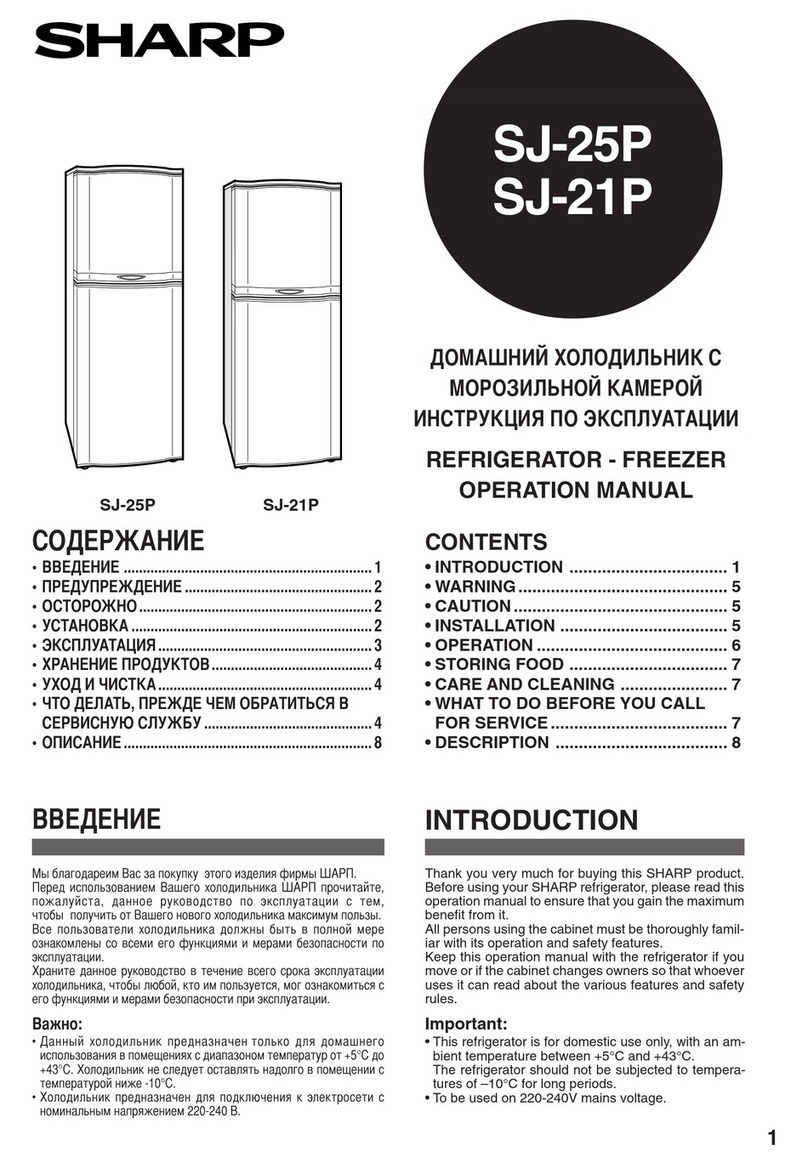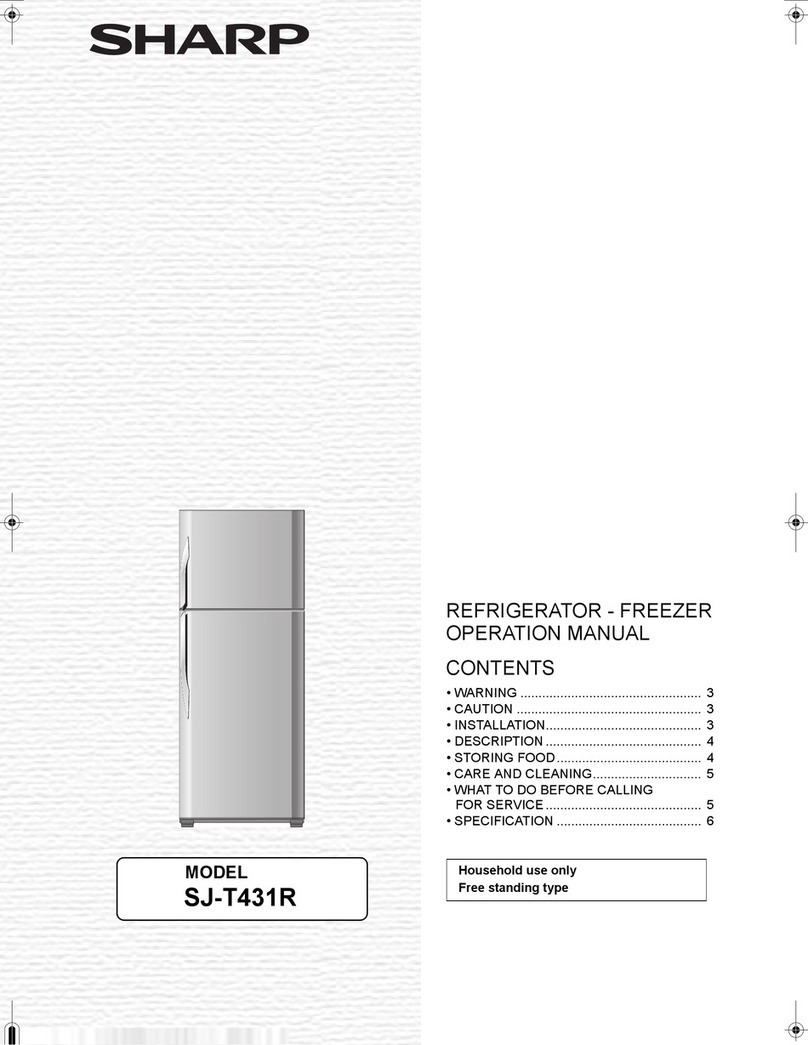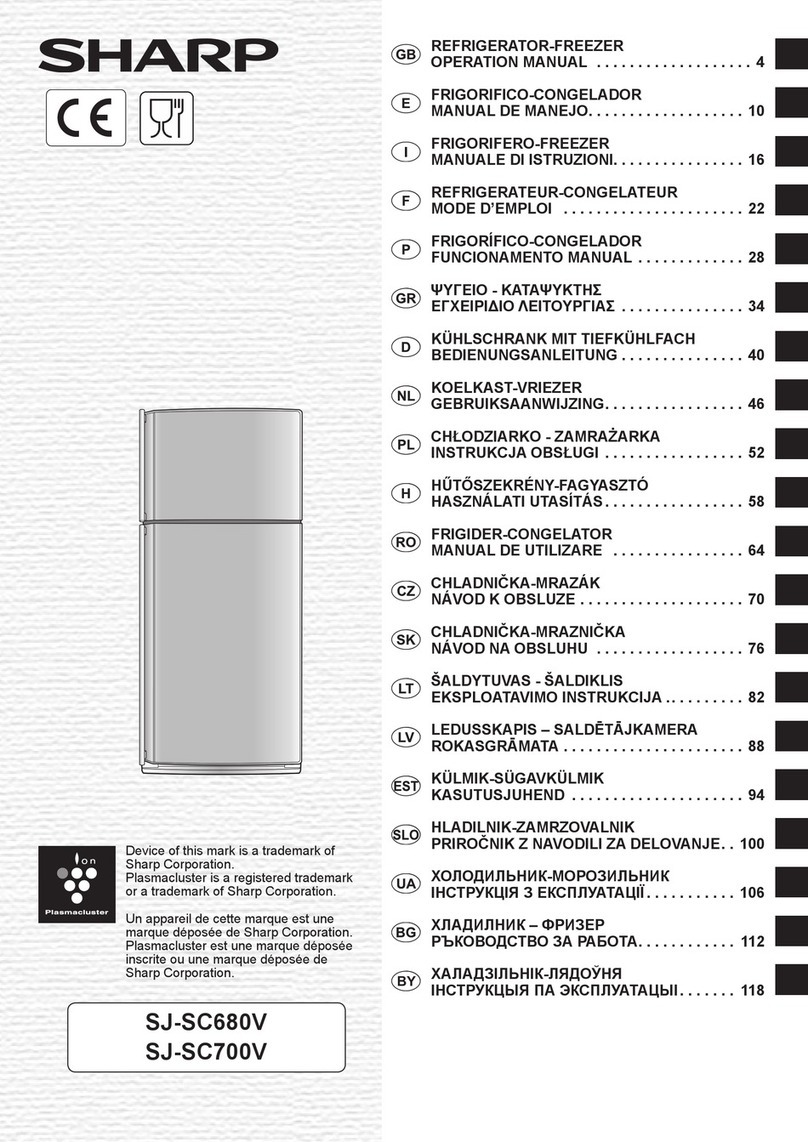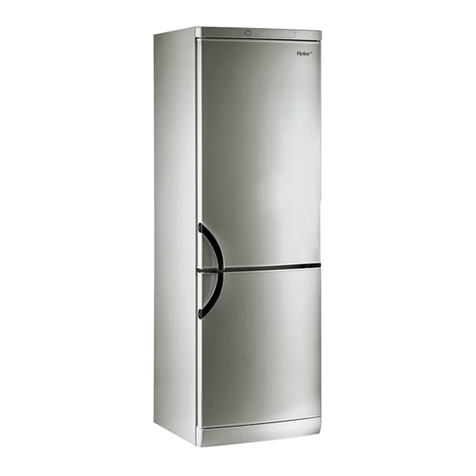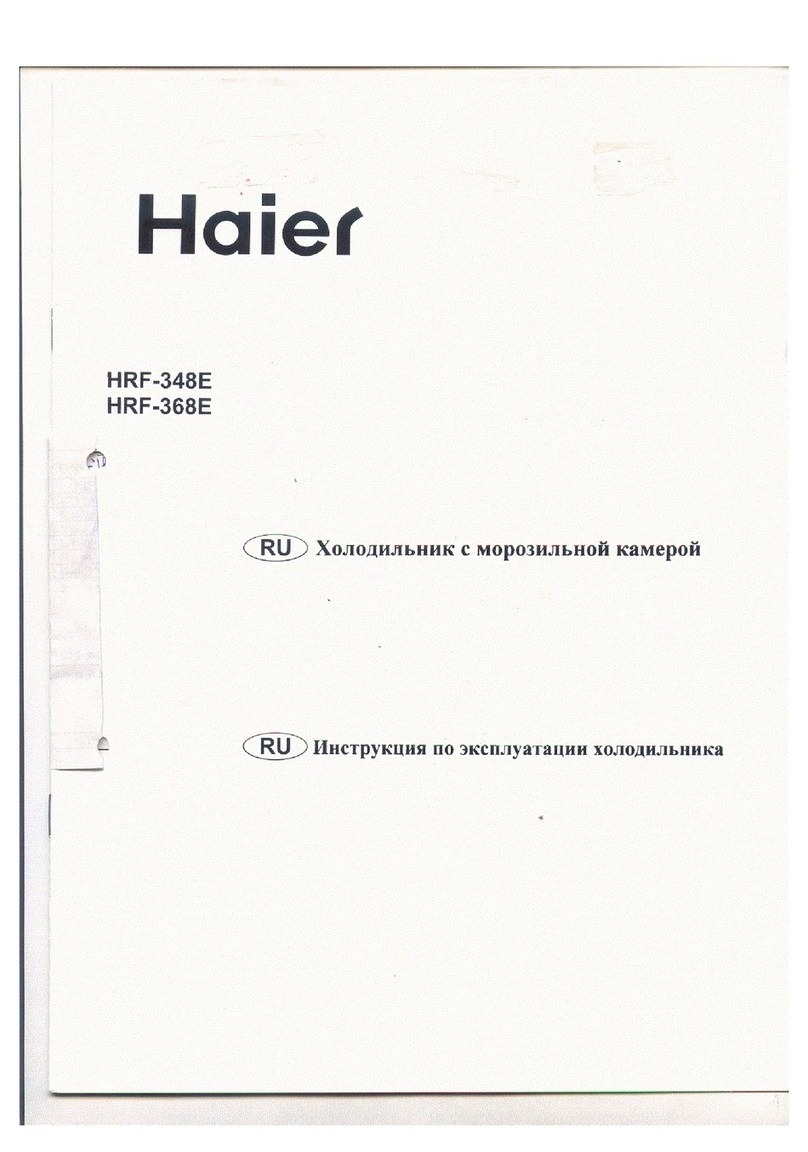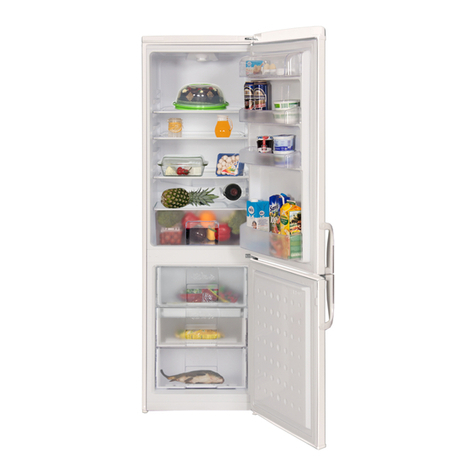
EN -6-
CHAPTER -1: GENERAL WARNINGS
For Denmark products:
The appliance is equipped with a plug approved in the EU ( EU-Schuko Plug) and can be used in Finland, Norway and
Sweden. In Denmark, the appliance is only approved for use with a wall outlet type E or type CEE7 // 7-S with a ground
leg. If there is only wall outlet type K at the connection point, Replacing EU-Schuko plug with the Danish plug must be
performed by only an authorized service personel. Alternatively, connect a suitable and approved power adapter to
transition between Schuko plug and Danish earth system. This adapter (min. 10 amps and up to max. 13 amps) can
be ordered via at well assorted whitegoods dealer or authorized electrician. Only with one of these methods it can be
ensured that the appliance is the correct safety ground. In the absence of earthing installation, an authorised electrician
should carry out an earthing installation. In the case of use without earthing installed, we will not be responsible for any
loss of use that may occur.
Installation Information
Before unpacking and manoeuvring your fridge freezer please take some time to familiarise yourself with the following
points.
• Position your fridge freezer out of direct sunlight and away from any heat source such as a radiator.
• Your appliance should be at least 50 cm away from stoves, gas ovens and heater cores, and should be at least
5 cm away from electrical ovens.
• Do not expose your fridge freezer to moisture or rain.
• Your fridge freezer should be positioned at least 20mm away from another freezer.
• Clearance of at least 150 mm is required at the top of your appliance. Do not place anything on top of your
appliance.
• For safe operation, it is important that your fridge freezer is seated securely and balanced. The adjustable feet
are used to level your fridge freezer. Make sure that your appliance is level before placing any
foodstuffs inside it.
• We recommend that you wipe all shelving and trays with a cloth soaked in warm water mixed
with a teaspoon of bicarbonate of soda before use. After cleaning, rinse with warm water and dry.
• Install using the plastic distance guides, which can be found at the rear of the appliance. Turn 90
degrees (as shown in the diagram). This will keep the condenser from touching the wall.
• Refrigerator should be placed against a wall with a free distance not exceeding 75 mm.
Disposal
• All packaging and materials used are environmentally friendly and recyclable. Please dispose of any packaging
in an environmentally friendly manner. Consult your local council for further details.
• When the appliance is ready to be scrapped, cut off the electrical supply cable and destroy the plug and cable.
Disable the door catch in order to prevent children getting trapped inside.
• A cut-off plug inserted into a 16 amp socket is a serious safety (shock) hazard. Please ensure the cut-off plug
is disposed of safely.
Disposal of your old appliance
This symbol on the product or package shows that the product should not be treated as domestic waste.
Instead, it should be taken to applicable waste collection sites that recycle electrical and electronic
equipment. Recycling materials will help preserve our natural resources. For more detailed information
regarding recycling this product, please contact your local authority, domestic waste disposal service, or
the shop where you purchased the product.
Please ask your local authority about the disposal of WEEE for reuse, recycle and recovery purposes.
Notes:
• Please read the instruction manual carefully before installing and using your appliance. We are not responsible
for damage resulting from misuse.
• Follow all instructions for your appliance, and keep this manual handy in order to resolve any problems that
may occur in the future.
• This appliance is produced to be used in homes and can only be used in domestic environments and for the
specied purposes. It is not suitable for commercial use. Such use will nullify the warranty and our company
will not be responsible for any losses that occur.
• This appliance is produced for home use and it is only suitable for cooling / storing foods. It is not suitable for
commercial or use and / or for storing any substances except for food. Our company is not responsible for any
losses due to improper use.
Safety warnings
• Do not use an extension cord to connect your fridge freezer to the mains electricity supply.
• Do not use plug adapter.
• A damaged power cord / plug can cause re or give you an electric shock. if damaged it must be replaced; this
should only be done by qualied personnel.
• Never kink the power cord.
• Never touch the power cord / plug with wet hands as this could cause electric shock.
• Do not place glass bottles or beverage cans in the freezer compartment. Bottles or cans may explode.
• When removing ice made in the freezer compartment, do not touch it because it ice may cause frostbite and /
or cuts due to ice formed with sharp edge.
• Do not remove items from the freezer if your hands are damp or wet. This could cause skin abrasions or frostbite.
• Do not refreeze food once it has thawed.
